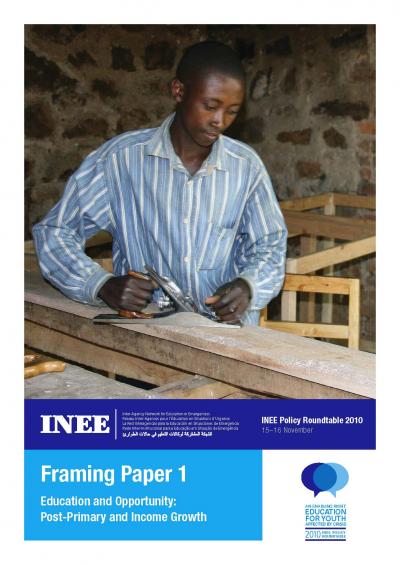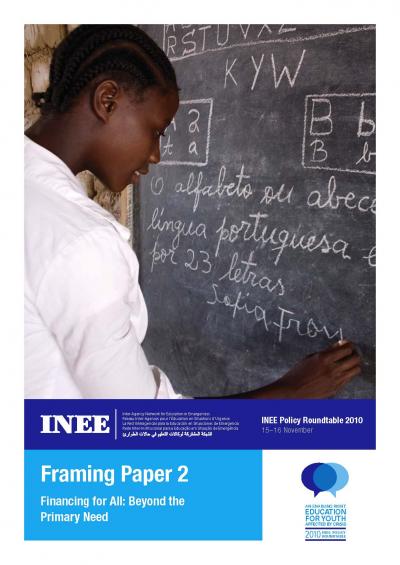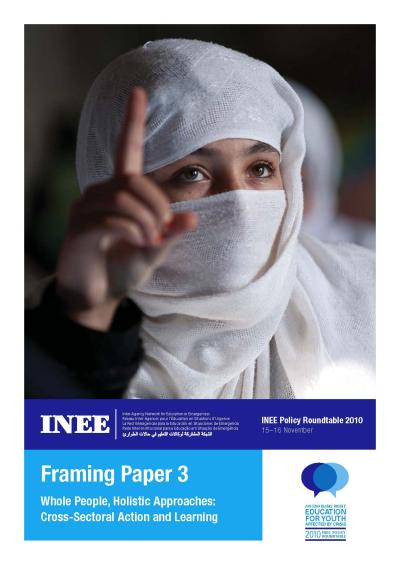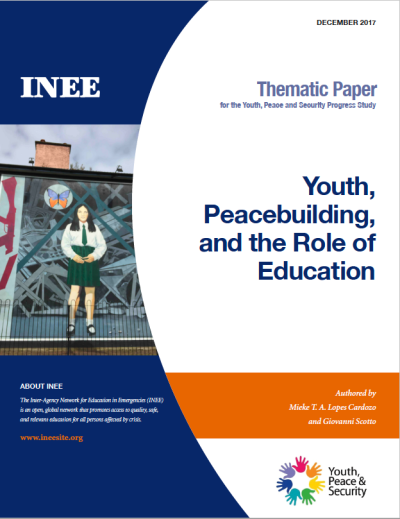Adolescentes e Jovens
O nosso mundo é jovem - adolescentes e jovens representam atualmente 1,2 bilhão da população global, e projeta-se que isso aumente em 200 milhões até 2050. A população jovem do continente africano aumentará para 35% do total mundial de jovens em 2050, sendo apenas de 20% em 2017. Na região do Médio Oriente e Norte da África, as e os jovens são o segmento que mais aumenta, sendo que cerca de 60% da população tem menos de 25 anos de idade. O Sul da Ásia abarca mais adolescentes - cerca de 340 milhões - do que qualquer outra região, seguido do Leste Asiático e do Pacífico, com cerca de 277 milhões. Nunca antes a percentagem de jovens da população global foi tão grande e é provável que nunca mais haja tal potencial para o progresso social e económico.
Hoje, cerca de 408 milhões de jovens entre 15 e os 29 anos, ou 23% da população jovem global, são afetados e afetadas pela violência e pelos conflitos armados. Durante as situações de conflito, a educação de qualidade garante que as e os jovens adquiram as habilidades e competências relevantes de que necessitam para o desenvolvimento de toda a pessoa, para se moverem no mercado de trabalho e se tornarem intervenientes de mudança nas suas comunidades. Isto oferece uma oportunidade crítica para aproveitar os investimentos anteriores em educação, ou para oferecer uma segunda oportunidade àqueles e àquelas que perderam oportunidades educativas e sociais quando eram crianças.
Consultas realizadas e lideradas por jovens destacaram a dificuldade de ter acesso a oportunidades de aprendizagem de qualidade, educação formal e capacitação como um dos desafios mais sérios para os e as jovens. Os e as jovens estão a pedir acesso a oportunidades de educação relevantes, equitativas e inclusivas que ajudem a prepará-los e a prepará-las para a vida e para o mundo do trabalho. Garantir múltiplos caminhos através da continuidade da educação (primária, secundária até as opções terciárias e de ensino superior) a partir dos e das adolescentes é vital.
Adolescentes e jovens são um grupo diversificado cujas necessidades atravessam múltiplos setores. Para melhorar o acesso à educação relevante, equitativa e inclusiva, devemos fortalecer as ligações entre os setores, os atores humanitários e de desenvolvimento e ser intencionais sobre parcerias locais e lideradas por jovens.
Principais Estatísticas:
-
225 milhões (20%) de jovens no mundo em desenvolvimento não têm emprego, educação ou formação.
-
Quase 3 em cada 10 jovens com idades compreendidas entre os 15 e os 24 anos, que se encontram em países afetados por conflitos ou catástrofes, são analfabetos.
-
As mulheres jovens têm quase 90% mais probabilidades de terminar o ensino secundário do que as suas homólogas em países não afetados por conflitos.
-
A migração interna atinge um pico entre as pessoas de 20 e poucos anos de idade, que frequentemente migram para aprender novas competências ou tirar o máximo partido das já adquiridas.
-
A matrícula no nível secundário de pessoas refugiadas aumentou de 23% para 24% no ano passado.
-
Houve um aumento no número de pessoas refugiadas com acesso ao ensino superior - um aumento para 3% depois de vários anos fixados no 1%. No entanto, este número é ainda 34% inferior às taxas globais de matrícula.
Os Requisitos Mínimos da INEE consideram jovens as pessoas com idades compreendidas entre os 15 e 24 anos e adolescentes as pessoas com idades compreendidas entre as idades de 10 e 19 anos. As definições e faixas etárias variam de um contexto para outro dependendo de fatores socioculturais, institucionais, económicos e políticos, com muitos países a definirem jovens como pessoas com até 35 anos de idade. No entanto, "juventude" é melhor entendida como um período de transição da dependência da infância para a independência da idade adulta e, portanto, é uma categoria mais fluída e não um grupo etário fixo.
Esta coleção foi desenvolvida com o apoio de Sophia Kousiakis, Conselho Norueguês para os Refugiados.







